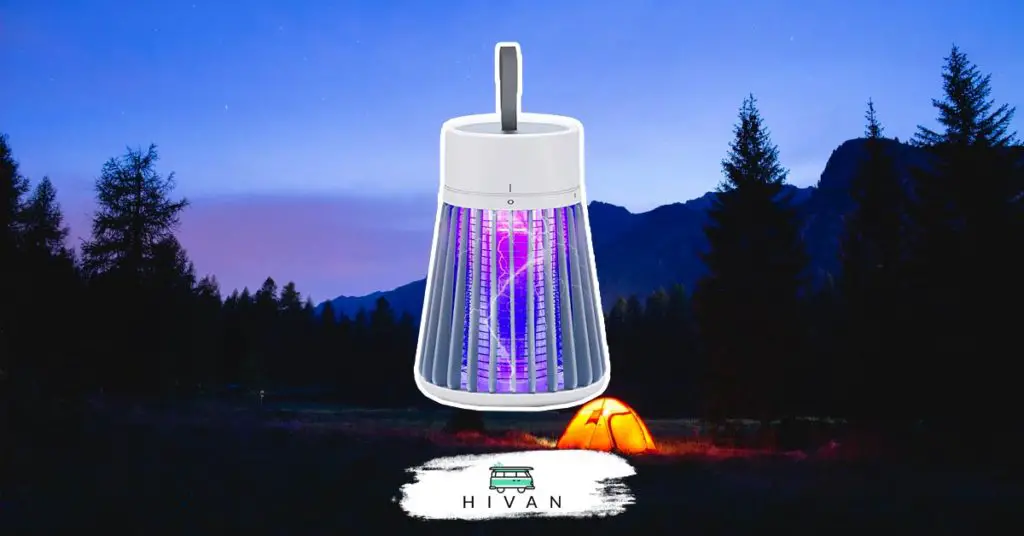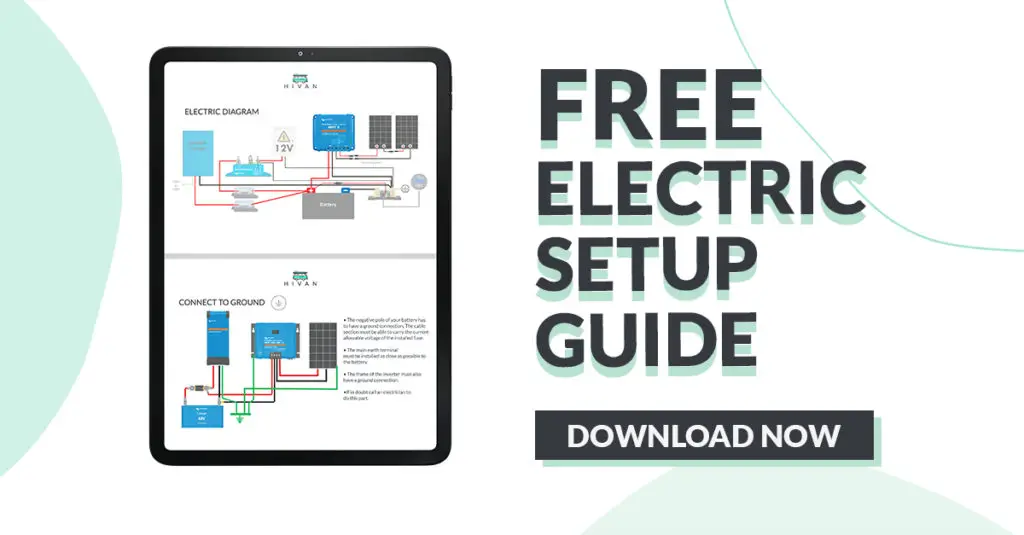Hi-van is supported by its audience. When you purchase using our links, we may earn an affiliate commission (no added cost to you). Learn more
Bug zappers are one of humanity’s greatest inventions. They’re often used to attract and kill insects during their peak hours of activity, dusk and night. But should bug zappers be left on all night?

You can safely leave bug zappers on all night, thanks to the durability of modern electronics. However, they continue to consume energy and have an ecological impact, so it’s commonly suggested that bug zappers should be off when people aren’t outside.
This article will explore whether bug zappers should be left on all night. It’ll also explain how they work and their history.
What To Consider Before Leaving Bug Zappers on All Night
There are five things to consider when deciding whether or not to leave a bug zapper on all night.
- Safety
- Energy use
- Durability
- Ecological impact
- Indoor or outdoor use
Safety
Historically bug zappers were not the safest electrical appliances. But under modern electronics manufacturing standards, they present no significant hazard to their operators. However, they can cause injury to small animals like birds and cats.
Bug zappers aren’t likely to start fires, although, like most electronic devices, they shouldn’t be left out in the rain.
Bug zappers do present a rather novel potential health hazard that people should be aware of. When insects fly into the zapper and get partially vaporized, the particles from their bodies can be spread as far as seven feet from the zapper. And it turns out that vaporized insect matter is an effective growth medium for several potentially harmful species of bacteria.
The National Center for Biotechnology Administration and the US FDA advise that bug zappers shouldn’t be used in close proximity to areas used for food preparation. In outdoor settings, the area around bug zappers may become contaminated with bacteria that usually live inside the guts of the insects they kill. Children shouldn’t be allowed to play underneath a bug zapper.
Energy Use
Bug zappers don’t use a significant amount of electricity. But battery and solar-powered models are available for those who are concerned about energy usage.
If your current power source is finite, for example, a car battery, you shouldn’t leave a bug zapper on all night.
Durability
The fluorescent light bulbs used as their primary bait have a finite lifespan, usually measured in hundreds to thousands of hours. The bulb will eventually die and have to be replaced. Replacement bulbs for bug zappers typically cost between $10 and $40.
Due to the mercury vapor they contain, fluorescent light bulbs require specialized disposal procedures and should be sent to landfills.
Ecological Impact
Bug zappers are indiscriminate insect killers. A single bug zapper can kill hundreds of insects in a single night, and most of those won’t be biting insects like mosquitoes or biting gnats.
A study conducted at the University of Delaware in 1996 analyzed 13,789 insect strikes on bug zappers and concluded that only 31 could be positively identified as mosquitoes. The majority of insects killed were harmless to humans, including moths, bees, and midges. Many of the insects killed were pollinators humans rely on for food production.
The last thing we should be doing is indiscriminately killing the insects we need; and for these reasons, it’s highly suggested that you don’t leave a bug zapper on all the time.
Indoor or Outdoor Use
The last consideration is whether your bug zapper is going to be used inside your home or outside. Most insects in the great outdoors are either harmless or beneficial to humans. But the insects that live in our homes are pests.
While bug zappers are generally useless against mosquitoes, they’re effective against house flies and green bottle flies. When used indoors, it’s a good idea to leave a bug zapper or other light-based insect trap on continuously to interrupt the lifecycle of our unwanted housemates.
How Bug Zappers Work
Bug zappers use some kind of bait to attract insects to a lethal electric trap. Most bug zappers use fluorescent light bulbs that emit light mostly in the ultraviolet range. Others emit carbon dioxide to mimic the exhalation of the preferred warmblooded prey of biting insects.
Whatever bait they use, bug zappers attract insects into contact with a mesh of electrified wires. If an insect contacts two or more wires, it completes a circuit and receives a lethal electric shock. Of course, a shock that is lethal for insects will merely be annoying or painful to humans.
Bug zappers take the 120-volt electricity supplied from residential plugs and step it up over 2000 volts using an electrical transformer. The shock delivered is powerful enough to partially vaporize small insects.
Conventional bug zappers use ultraviolet light to lure insects to their doom. But studies show that female mosquitoes, the most notorious biting insects, are not attracted to UV light. Most of the insects killed by bug zappers are harmless or even beneficial to humans.
Female mosquitoes are attracted either by carbon dioxide exhaled by land mammals or by chemicals that mimic the pheromones of male mosquitoes. Some bug zappers use chemical attractants like carbon dioxide or octanol (a synthetic mosquito pheromone) to attract insects that bite people.
The Rechargeable Bug Zapper from CherryPig is well designed and can work up to 6 hours on a single charge.
- Indoor use
- Safe and harmless design
- Highly efficient
- Rechargeable
- Easy to clean
History of Bug Zappers
The first concept for a bug zapper-like device appeared in the October 1911 issue of “Popular Mechanics” magazine. It featured five incandescent light bulbs arranged around an electrified wire cage and was supposed to be baited with meat. The device was built by hobbyists in Delaware who concluded that it was too complicated and expensive for mass production.
The first American patent for a bug zapper was issued to William M. Frost in 1932, which he referred to as the “Insect Electectrocuter.” A University of California professor of parasitology named William B. Herms, working completely independently from Frost, produced the first commercially viable bug zapper in 1934. All modern bug zappers are descended from the Herms design.
Final Thoughts
Just because you can leave bug zappers on all night doesn’t mean you should. Besides the energy consumption, they have an impact on the environment. Still, when you’re trying to prevent bites from blood-sucking insects, they’re incredibly useful. Overall, it’s probably a better idea to only have them on when people are around.
Find this content useful 🙂 ?
Subscribe to our Newsletter and get a free Solar Electric Diagram + shopping list.


